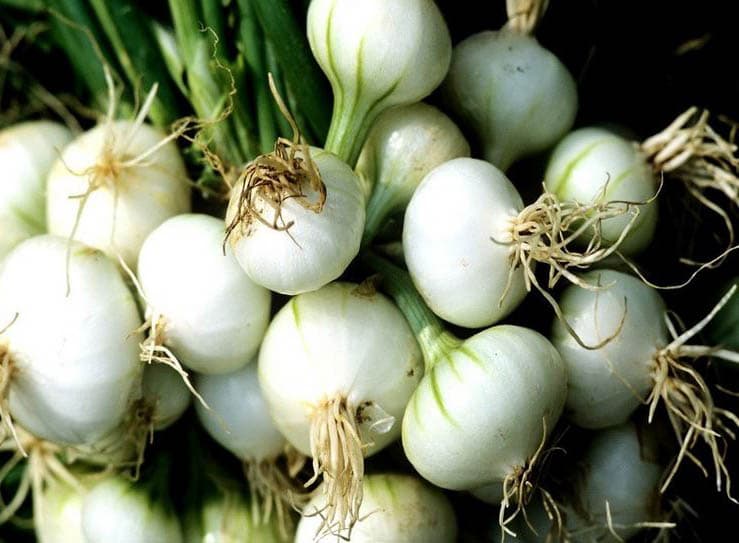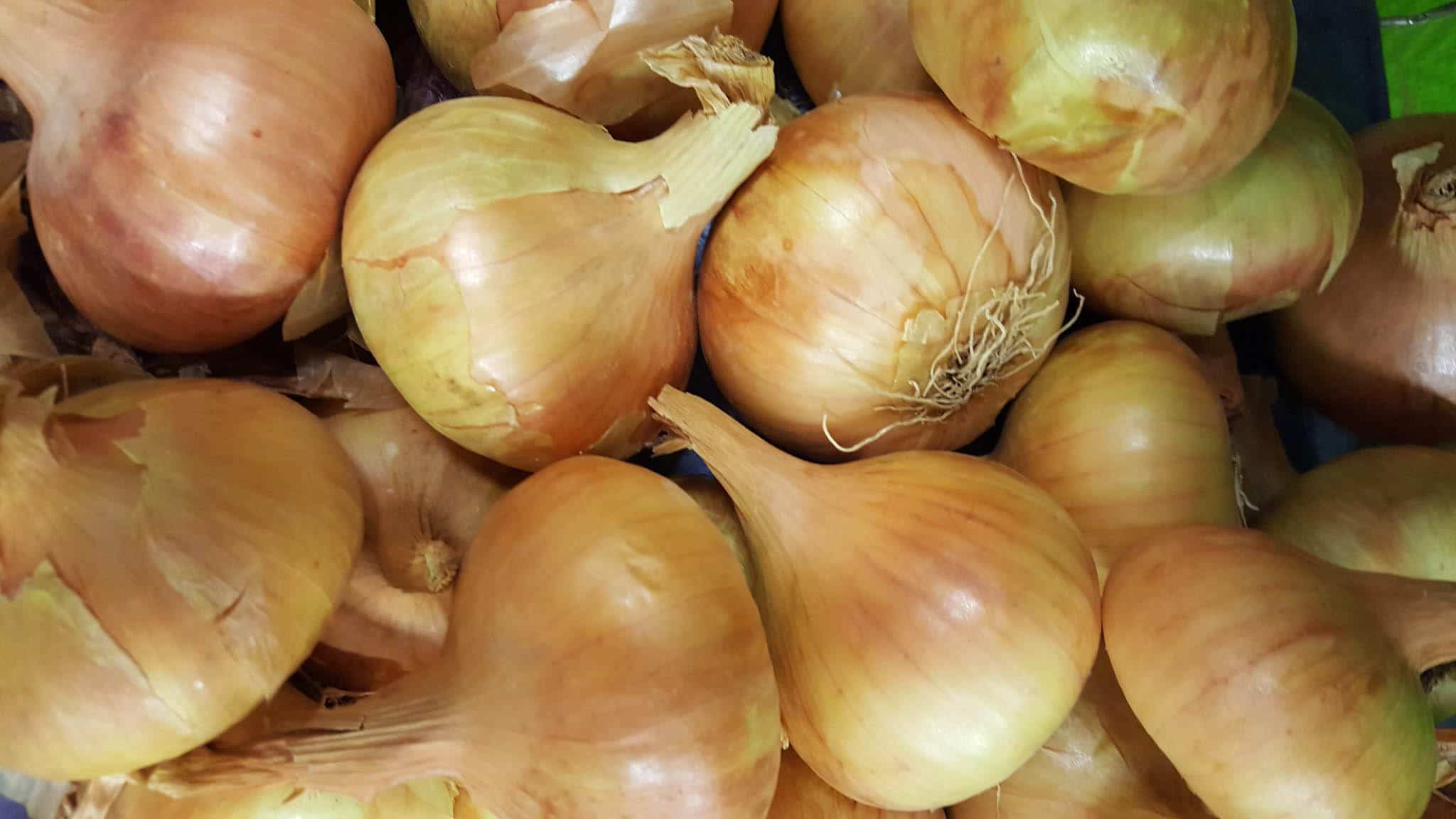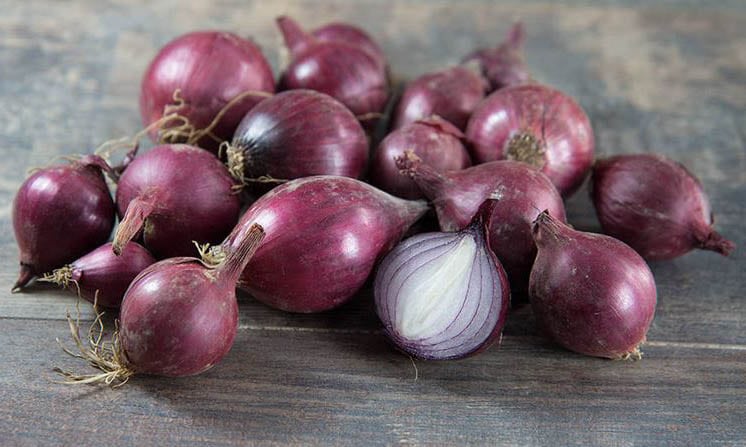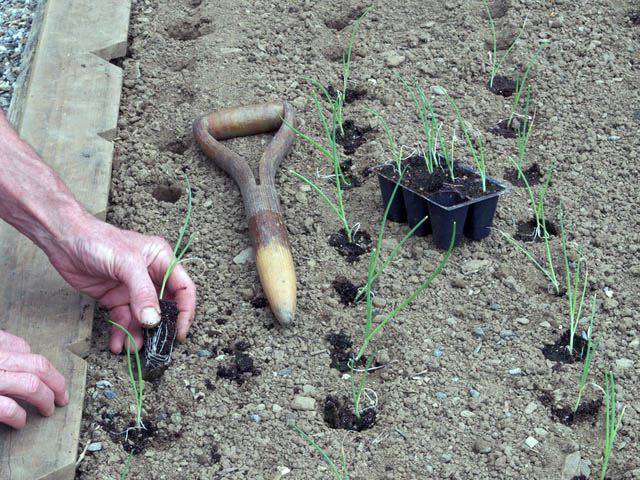When to sow onions?
The sowing of the onions is done at times which can vary according to the region, the type of culture (to preserve or in fresh) and the varieties. As a rule, it is planted or sown in spring or autumn.
Colorful onions They sow in the fall if you live in a mild climate. In all other regions of France, it will be sown in late winter, late February or early March to April. In contrast, bulbils plant in spring in March and April. This type of onions do not get stuck.
White onions They sow at the end of summer between August 15th and September 15th, in regions where the winter remains quite mild. They can be sown in a nursery or directly in the ground, and if you put them in the nursery, you wait until October to transplant them. Be aware that some early varieties are sown earlier in the spring, between late February and April.
Which varieties to choose?
If the onion is easy to grow, the main difficulty you may encounter is related to the match between the variety and the place where you plant it. The climate must be conducive to its culture. As you will see, many varieties have a name related to their region of culture. You will not necessarily succeed in cultivating all varieties at home. However, this is a little less true with hybrid varieties, in which case you have to follow the advice given by the producers.
We can classify the different varieties of onions according to the color of their bulb: white, red or yellow. The white onion is eaten rather fresh before full maturity, the yellow is the one that is preserved the more easily and long and the red one with a softer flavor, but it is kept less long.
White onions:

From Barletta they come in the form of small, almost round, white bulbs. It is a very early variety that is harvested after only two months of cultivation. It is particularly recommended in regions where winter is mild: in autumn sowing in the South, and spring elsewhere. It is harvested between May and September. It resists moderately cold.
From Vaugirard : it presents a white and round bulb, rather voluminous and slightly flattened. This early variety is indicated for fall planting in all regions, it can also be sown in the spring. It is harvested between April and July. It is very resistant to cold.
From Paris: it has a large silver and flat bulb. It is an early variety that sows in the fall everywhere and is harvested in the spring between April and June. It is particularly well-preserved and is cold-resistant and very productive.
Yellow onions:

Stuttgartr Riesen or Stuttgart Onion : it is a round onion, dark coppery yellow and slightly flattened with a firm white flesh. It is perfect for spring planting or from late February to mid-April. It is harvested from late July to September. It is a hardy and traditional variety that has a good yield and keeps very well.
Straw of the virtues It has a large bulb that can reach 10 cm in diameter with firm, white flesh. His skin is thick. It is sown in spring all over France, it is easier to grow in the north. It is harvested between July and August and it is a very productive and rustic variety. It is the most cultivated by amateurs. It is easy enough to keep for quite a long time.
The yellow of the Cevennes or Raillolette : its bulb is straw yellow, it is slightly flattened and it offers a white flesh. It sows in February-March in the nursery and is transplanted in May to be harvested in August or September. It can be preserved moderately and it is best to consume it before winter. It has a slightly sweet flavor and is melting in the mouth.
Red onions:

From Brunswick : it has a round bulb of a very intense red, purplish red flesh. It's a half-season variety that sows all over the spring for a fall harvest. It is hardy and can be kept perfectly well. Its flesh has a sweet and sweet taste very pleasant.
Pale red from Niort : its bulb is voluminous, round, slightly flattened and has a coppery pink skin and a thin and purplish inner envelope. His flesh is white or pink. It offers the best yield when grown early. It is particularly popular in the west in fall planting after removing the white onions. It can also be sown in the spring. It is very productive, it conserves moderately well and it is better to use it as and when production. He has a pretty good taste.
Florence long red Simiane breed: its bulb is strongly developed and elongated, it is little swollen and it has a red envelope and its flesh is pink. This early variety sows in the fall and summer and is grown in all regions. This variety has a good yield and a mild flavor that is reminiscent of the shallot. It must be harvested at maturity to consume raw, it does not keep.
What to do before sowing the onions?
Before sowing the onions, it is recommended to prepare the soil by digging it so as to remove all the weeds, old roots and pebbles that could prevent it from developing and rooting properly.
How to sow them?
From the summer or the fall, you can perfectly, as we have already seen, sow in a nursery or in the ground. In late winter, however, sow them directly in the ground, then you will only have to clear up.
Sow in nursery:
- On a soil that you have prepared and refine, sow the seeds on the fly.
- Rake then to sift the seeds and pass the back of the rake to smooth the soil and keep the seeds in it.
- Water in fine rain so as not to scatter the seeds.
- As soon as the plants have 4 or 5 leaves, you can lighten them by separating them by 5 cm.
Sow in the ground:

- Open shallow furrows that you place at distances of 25 to 30 cm.
- Sow without clumping, in summary try to sow as much as possible.
- Cover with a thin layer of soil and tamp with the back of the rake.
- Water correctly.
- The lifting takes between 15 and 20 days.
- Thin to 10 cm on the row, waiting a few weeks after emergence.
Plant the bulbils:
- If your land is a little heavy, form small hills. Then plant a bulblet every 10 cm in rows spaced 25 to 30 cm apart.
- Push in the bulbs by hand, with the point upwards, leaving the floor flush.
- You do not need to water because the onion does not like moisture.
Onions are harvested earlier by directly planting bulblets, however, the onions are then much less well preserved than those you have sown.
Multiply the onion:
The onion can easily be multiplied by sowing. However, it must be ensured that it is not an F1 variety that can not be reproduced.
Our advice: Do not harvest the seeds on an onion that bloomed prematurely, they might transmit this character.
You select the most interesting bulbs of your harvest, namely those which are the most developed and which are well preserved: presenting neither rot nor germ. You replant them in February and March. They must have a space of 40 cm on each side. You will immediately install a tutor to attach the flower stems.
You harvest the umbels before the seeds fall once the flower and stem are brown with a piece of stem. Leave to dry flat in an airy and dry place.
You can keep the seeds for up to two years.
Where to plant onions?
You can plant the onion on a plot where you had previously planted other crops, the residues will then be appreciated by them. It is not recommended to plant them on land that has been smoked recently.
It is preferable that the place enjoys a good sunshine and that the soil is light and well drained. If your land is too heavy, do not worry, make small clumps of 10 cm and plant them to promote the flow of water.
How to maintain them?
It will be necessary to hoe the soil regularly so as to remove the weeds which can prevent the good development of the onion. In addition, you ventilate the earth well.
Do not mulch the onions, in which case you risk making them rot. You can just put a thin, protective layer, you have to stop there.
How to water onions?
The onion does not need to be watered except in the case where the drought is extreme and only when the bulbs are formed.
Then you do not need to water.
Harvesting onions: when and how?
Onions are harvested according to the different varieties:
White onions they will be harvested between the months of April and June, and even until July, for those you have planted in the spring. You can perfectly spread out your harvest, you can start harvesting at a very young age to free up some space which allows the other plants to grow well.
Little advice : never discard the green leaves of the onion again. By cutting them very finely, you can use it to flavor your Asian dishes or as chives use in your salads.
Colorful onions: they are harvested in August when the leaves lie on the ground and turn yellow. You harvest them preferably when the weather is dry. You leave the bulbs on the ground to dry for one to two days. Then you can return them and place them in an airy and dry place. Let them mature a few weeks by spreading them well. Then, before storing them, it will be necessary to clean them by removing the earth which forms an envelope.
Keep them in crates, do not stack them, because the air must circulate. You can also hang them in braided boots.
They enjoy themselves in an attic or in another place away from the light, you will keep them for a year. In a heated place, they quickly deteriorate, wilt and rot easily.
Onion diseases and what to do?
The onion is simple to grow because it is quite undemanding. But we must still respect the necessary conditions to avoid the following cryptogamic diseases:
Mildew : this disease is characterized by the formation of elongated and yellow spots on young leaves, which eventually dry up.
Damping off : it touches the young plants and they disappear then. It tends to grow in acidic and humid soils.
The rotting it is characterized by bulbs that soften and yellow. It appears for two reasons: either the soil has been enriched with a fresh manure, or it is much too wet.
In general, these diseases tend to occur when the atmosphere is wet and cool and the soil is saturated. The affected feet should be eliminated quickly. You can also act in prevention by spraying Bordeaux mixture so that diseases do not spread.
The fly of the onion : it lays near the collar and its larva causes wilting of the leaves and bulb rot. It is therefore necessary to quickly destroy the bulbs that are affected.
Read also :








